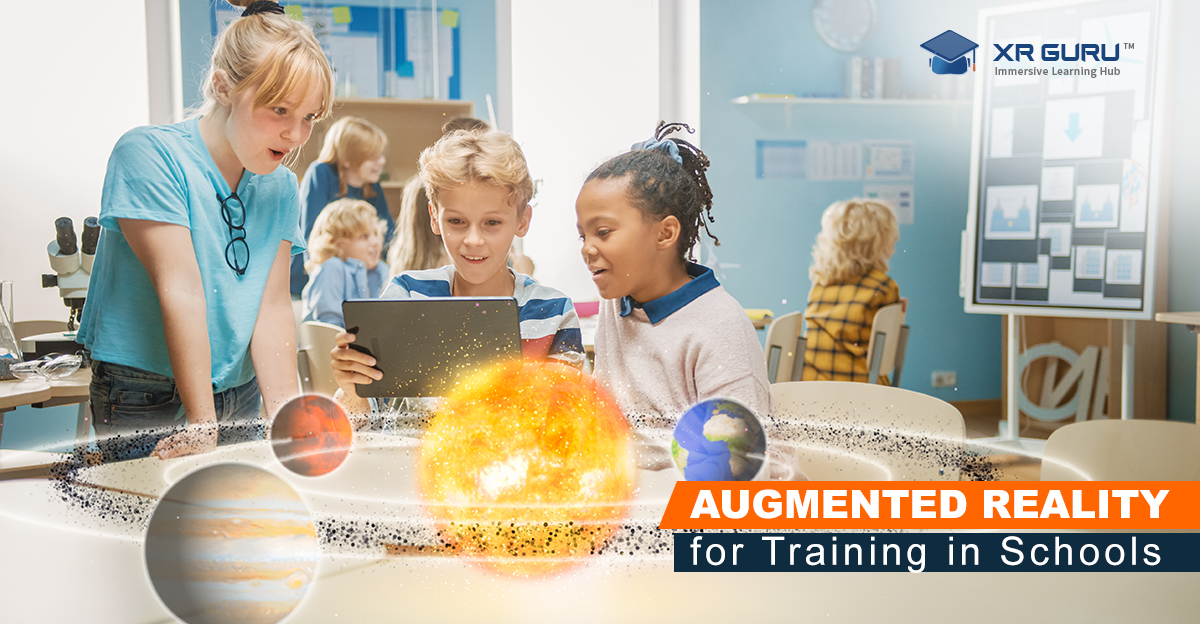
We have to thank games like Pokémon Go and social media apps like Snapchat for incorporating Augmented Reality in their applications and making it known to the world. The world of education is slowly but surely incorporating Augmented Reality while developing their curricula for Generation Z and beyond.
In this blog post, we look at some compelling use cases for Augmented Reality to train students at school in 2022 and the future.
1. AR for Kindergarten
At the Kindergarten level, students are required to remember and understand various names of objects. Textbooks help the students here in acquiring names and various vocabularies across languages. Imagine if the words were to come alive and help the students visualize the meaning of the concepts. Such a scenario would help students connect the words with the exact concept being referred to. AR books are the rage now. Students and their parents can point their smartphones on various market embedded images and words, bringing people, animals, places, and concepts to life.
2. AR for Learning Complex Chemistry Equations and Reactions
Many students have opted out of choosing STEM due to the fear of learning complex equations. The human brain is a wonderful mechanism that thrives by making more synaptic connections. These synaptic connections between neurons get stronger when there are more associations involved between them. An AR book can help students visualize how the elements in Mendeleev’s periodic table interact with each other and bring forth new results. Such a visualization will help them better appreciate the concept and also enable them to easily connect the dots at their brain level.
3. AR for History and Art Appreciation
History and Art are often seen as dull subjects. However, the farther end of the spectrum of learning – Humanities and Social Sciences – has immense scope for the human species per se. We evolve socially out of our collective interactions, and it helps to refine humankind over time. With AR, History and Art can come alive. Imagine Napoleon Bonaparte talking to you and explaining how he rose from a common man to lead France. Or imagine Rembrandt and Michael Angelo explaining their concepts of Art appreciation to a student and helping them create the next Mona Lisa of the digital age. AR can make these possible.
4. AR for Medical Training and Education
The human body is one of Nature’s finest machinery. With 206 bones and numerous muscles, it makes us wonder how we function seamlessly for a few decades. How can students comprehend the human body in its totality as well as appreciate each subsystem on its own? Will static textbooks do justice to this concept? We doubt. So far, we have relied on videos and cadavers to help appreciate the human body. But with Augmented Reality based textbooks, students can scan the target images and see the systems come alive on their digital devices. This will help them to visualize human body models and appreciate anatomy in depth. It will also provide more simulations for medical students.
Augmented Reality for Training is not limited to the above four use cases or educational levels alone. Augmented Reality is like a genie whose time has come to be let out of the bottle. All a person needs to take advantage of AR is a smart device with a working camera and an internet connection. Students are blessed with an open mind and a keen curiosity to learn new concepts. This, unfortunately, is killed with traditional rote-based learning pedagogies which focus on lower order thinking skills of Remembrance, Understanding, Application, and Analysis alone rather than the higher order thinking levels of Creation and Evaluation.
Takeaway Thoughts for 2022
The pandemic situation has evolved into the second wave and Doctors are talking about the possibility of a third wave. In this light, it makes clear sense to incorporate social distancing as a way of life. Having AR in training for schools in 2022 would be one welcome step in this direction. The above cases are just some of the compelling reasons how schools and educational institutions can leverage AR for their student needs. How can your students and educational institution benefit by incorporating augmented reality for training in education?
Get a free consultation for your augmented reality learning needs